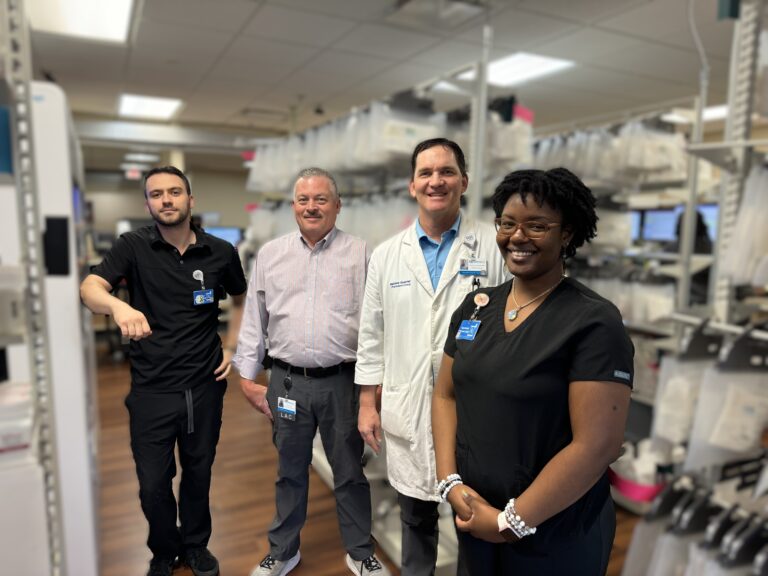Outpatient pharmacy staff was struggling with an unreliable will-call system. “Now, we couldn’t be more pleased. … scripClip lights on queue; it’s quick; it never fails. … We should have gone with this in the first place!”
Slogging Through a Will-Call Nightmare
Todd Manson, Pharmacy Service Manager at HopeHealth’s main pharmacy in Florence, South Carolina, joined the organization in 2021. They had a pick-to-light will-call system at the time, but it required uncommon batteries and wasn’t reliable. His boss, Chief Pharmacy Officer Christi Epps, was on the hunt for something new.
The HopeHealth ambulatory pharmacy is a big one – with 1500 patient orders in will call at any given time. They fill between 800 and 1100 scripts a day, and staff provides them to patients at one of four front-end registers or the drive-through.
“If it takes even two minutes to find an order, that’s too long,” Manson illustrated.
***
Epps, Manson and the pharmacy procurement team followed a fellow health system’s recommendation for a replacement lighted will-call system, which is when the nightmares really began.
“For two months, it worked great,” Manson recalled. “But then it started failing. Certain rails would just stop working.” Even when it did light, he said it would often take a “ho-hum” long time.
When you have, for example, three rows of Bs and three rows of Ms, having a rack fail intermittently is a recipe for disaster. Manson worked with the vendor to submit many work orders and eventually replace every bag in the pharmacy, but they still couldn’t get the technology to work consistently.
“Staff was frustrated. They couldn’t find things and would get so bogged down. It made us look very bad in front of patients,” Manson said. “We had to alphabetize all the orders just to get through the day because lighting only worked 60 or 70 percent of the time.”
After nearly a year, Manson said, “We were just done.”
Finding a Better Solution
Epps and Manson went in search of yet another fix. Third time’s a charm, right? With guidance from Capsa Healthcare, they found scripClip!
Removing fixtures from the previous system was challenging, but installing scripClip hardware and software was a breeze – as was training the team.
“We couldn’t be more pleased [with scripClip],” Manson exclaimed. “It’s a complete 180 from where we were before.”
“I hear no more complaints,” he said. “We all like the simple process to bag and bin.”
Manson described the ease and speed of the search and retrieval process, in particular: After typing in the first three letters of a patient’s last name, the list starts populating and prompting date-of-birth confirmation.
“scripClip bags are lit up in will call by the time you turn around from the point of sale.” No more ‘ho-hum’ waiting.
Each employee at the register picks their preferred color (Manson likes green, himself.) and also appreciates the audible beep when locating scripClips.
Living the Pharmacy Dream
“We all say we should have gone with this in the first place!” Manson said.
scripClip works well with the PioneerRx pharmacy management system and “lights on queue; it’s quick; it never fails.”
Although Manson isn’t personally involved in return-to-stock processes, they’re also handled nicely with scripClip. The HopeHealth team uses a blue light to flash all prescriptions that are aged 14 days and return them to stock – 100-150 every other week or so.
The health system pharmacy continues to grow, at the main location and across four others in South Carolina. Luckily, they now have a will-call system they can count on to scale with them.

